Whether it’s engineering or game design, 3d modelling and CAD work has become very big in the past few years, especially with a lot of folks starting to do it at home for things like 3D printer files. Of course, not every laptop you pick up can handle doing that sort of work, so if you plan to do either, then going for a laptop that is fit for the job is important. To that end, we’ve collected our five favorite laptops across various price ranges and needs so that you can pick the perfect laptop for you.
The Best Laptops for 3D modelling
- Buy the
if you want the best overall laptop for 3D modelling. - Buy the
if you want the best-performing laptop for 3D modelling. - Buy the
if you want the best Apple laptop for 3D modelling. - Buy the
if you want a thin, light, and portable laptop for 3D modelling. - Buy the
if you want a budget-friendly 3D modelling laptop.
Legion Pro 5 Gen 8
Best overall for 3D modelling
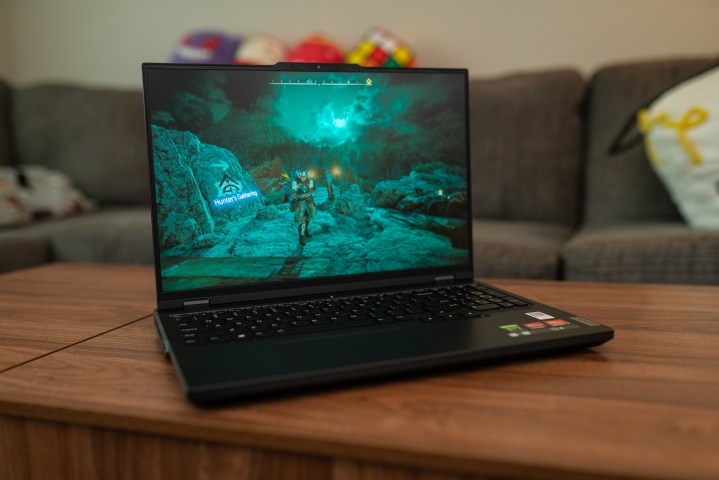
| Pros | Cons |
| Fantastic value | Middling screen |
| Top-tier GPU performance | A bit heavy |
| USB-C charging available |
While the Legion Pro 5 Gen 8 is not necessarily the most powerful laptop on this list, it’s one of the best to balance specs with cost, so if you’re looking for a good mid-range option that ticks most of the boxes, then this is the one to go for. Under the hood, it runs an AMD Ryzen 7 7745HX Processor, which is a mid-to-high-end CPU that should handle most modelling tasks with ease. That’s especially true since it easily overshoots the recommended requirements for AutoCAD for a processor that can do more than 3GHz.
You also get plentiful RAM here with 32GBs of DDR 5 memory, which is also double the recommended 16GB for AutoCAD, although we’d actually say the ideal amount of RAM starts at 32GB, so you’re good. It’s also the newer and faster memory compared to DDR4, so it should perform better overall. As for graphical processing power, you get an RTX 4070, which is a solid mid-range gaming GPU that should handle most 3D modelling tasks relatively well and should be fine for most use cases.
In terms of screen size, we’re happy to say that it’s a very solid 16 inches, so there is lots of room to see details, and it even runs a 2560 x 1600 resolution, which is perfect without pushing the GPU too much. It can hit a peak brightness of 300nits, which isn’t that great if you’re in well-light areas, although the 165Hz refresh rate is certainly nice for a smoother experience. We should also mention that it’s a bit on the heavier side, so be sure to take that into account if you need to move around a lot.
| Specifications | |
|---|---|
| Screen Size |
16-inches |
| Processor | AMD Ryzen 7 7745HX |
| RAM | 32 GB DDR5 |
| Storage | 1TB SSD |
| Weight |
5.51 pounds |
ASUS ROG Zephyrus M16
Best powerful Laptop for 3D Modelling
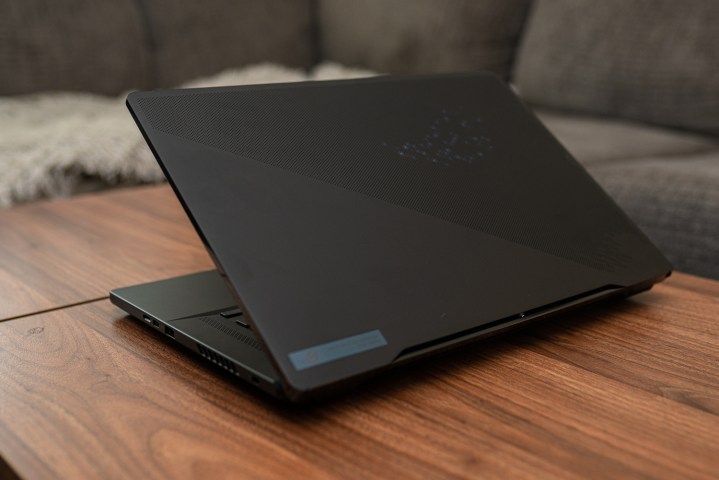
| Pros | Cons |
| Smart and stylish design | Battery life is a bit weak |
| Excellent keyboard | Is a bit heavy |
| Beautiful 240Hz screen |
You might be thinking to yourself, “What is a gaming laptop doing on a list of 3D modelling laptops?” Well, it’s not a surprise that there is quite a big overlap when it comes to a good laptop for gaming and a good laptop for 3D modelling. For example, the ASUS ROG Zephyrus M16 has an Intel Core i9-13900H, one of the most powerful CPUs on the market, and just a grade below professional-grade CPUs like the Intel Xeon and the Ryzen Threadripper. As such, it’s more than happy to chug away at any 3D modelling tasks you send its way without too much hassle, assuming you aren’t doing anything crazy.
In a similar vein, the Zephyurs M16 runs an RTX 4090 under the hood, which is one of the best non-professional grade GPUs out there and, again, will easily handle most 3D modelling tasks you throw its way. That said, the inclusion of the RTX 4090 does mean that it drinks up electricity like it’s abundant, so the battery life is not that great, especially when you’re putting a lot of load on the GPU. It also means that it runs pretty hot, so these are two very important things to consider before buying in.
Luckily, the screen is excellent, with a 16-inch that runs a 2560 x 1440 resolution, which is always a nice addition to have. The same goes for the 240Hz max refresh rate, which you likely aren’t going to need for non-gaming needs, so setting it to 120Hz will give you a smooth experience while freeing up some processes for 3D modelling. We should also mention that you get a very impressive 32GB of RAM and 2TB of storage, which really puts this configuration of the Zephyrius M16 in a league of its own.
| Specifications | |
|---|---|
| Screen Size |
16-inches |
| Processor | Intel Core i9-13900H |
| RAM | 32 GB DDR5 |
| Storage | 2 TB |
| Weight |
5.07 pounds |
MacBook Pro 16
Best powerful MacBook Laptop for 3D Modelling
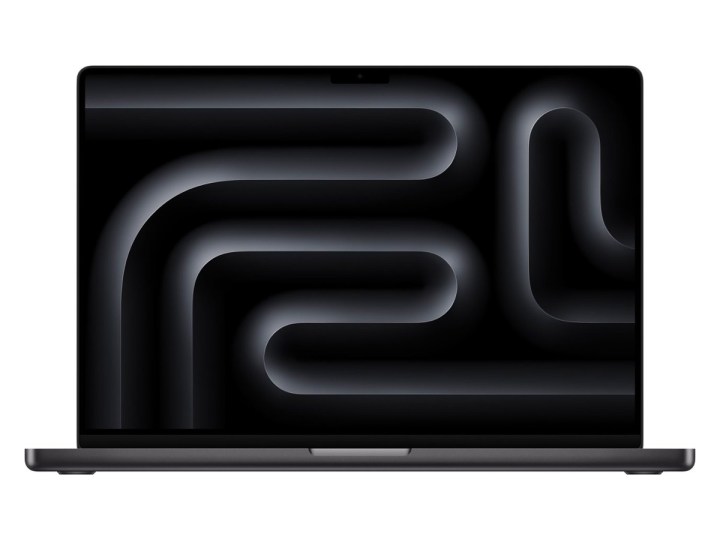
| Pros | Cons |
| The best keyboard on a Mac | Only supports one external display |
| Excellent performance overall performance | Very expensive |
| Very portable |
If you’re in the Apple ecosystem or want a MacBook for 3D modelling, then you have to go for the absolute best that Apple has to offer, which is the M3 Max MacBook Pro 16, a bit of a mouthful but hard to beat in terms of specs. Actually, we would have probably picked the M3 Pro version to save a little, but sadly, the M3 Max version is the only one that has the 36GB of RAM that we consider to be ideal for 3D modelling. Even so, the M3 Max chip is the best that Apple has to offer, with a 14-core processor that will easily handle most tasks you throw at it.
Even better, the M3 Max also has a whopping 36 GPU cores, so it’s exceedingly well-suite for 3D modelling tasks, and some would argue that Apple has some of the best hardware for graphics rendering and work in general. That said, you should keep in mind that not all applications work on both Windows and MacOS, with MacOS sometimes missing out on a few, so be sure to check that your app is supported on MacOS before taking the plunge. That said, if it does run on MacOS, then you’ll be happy to know that you get an SSD with 1TB of storage, so your apps will load fast, and you’ll have a lot of space for any files you need, which are likely a lot for this sort of work.
Finally, while not exceedingly important, the 16-inch screen of the MacBook Pro is just lovely, as it has a 3456 x 2234 resolution running on a Liquid Retina XDR display, the best one that Apple offers. Also, it’s a relatively portable laptop for its specs, so even though you’re paying a premium, it’s perfect for those who tend to move around a lot.
| Specifications | |
|---|---|
| Screen Size |
16-inches |
| Processor | M3 Max |
| RAM | 36GB |
| Storage | 1TB |
| Weight |
4.8 pounds |
LG gram 17
Best thin and portable laptop for 3D modelling
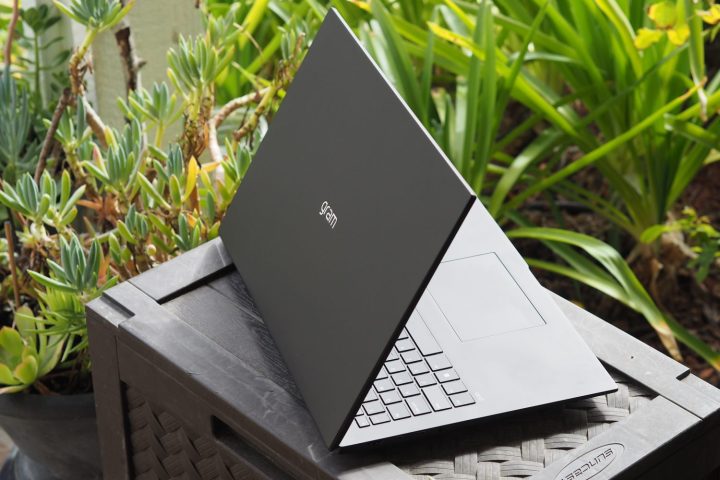
| Pros | Cons |
| Exceptionally light | Feels a little flimsy |
| Excellent display | Expensive |
| Very good keyboard and touchpad | Only has an RTX 4050 |
Solid 3d modelling laptops don’t need to be big, bulky, and very expensive, and if you want something that’s very thin and portable, you can’t go wrong with the LG Gram 17. It sits at an incredibly 0.7 inches of thickness despite the fact that it runs an RTX 3050 under the hood. Now, granted, the RTX 3050 is a very entry-level GPU, but the fact that it has a GPU at all is impressive, and every little bit counts when it comes to 3D modelling. It also only weighs 3.2 pounds, which is equally impressive.
In terms of processing power, it has an Intel Core i7 Evo, so it’s more than capable of handling 3D modelling and clears the recommended specs of most apps by a good margin. That said, the RAM only meets the recommended specs with 16GB of DDR5 memory, and while we would have liked to see double that, it’s not going to grind any 3D modelling to a complete halt. As for storage, you get a 1TB SSD, so lots of space and quick loading of apps and data.
Finally, it’s worth touching on the fact that the display is very good, a 17-inch display that runs WQXGA and gives you a relatively large amount of space to do your work, and we hope you can appreciate that. Even so, one disadvantage of the larger screen is that, combined with how thin it is, it can feel a bit flimsy, which isn’t ideal for something this pricey. So, if you do end up buying this one, don’t treat it like a rugged laptop, but be sure to be somewhat gentle with it.
| Specifications | |
|---|---|
| Screen Size |
17-inches |
| Processor | Intel Core i7 Evo |
| RAM | 16 GB DDR5 |
| Storage | 1 TB |
| Weight |
3.2 pounds |
IdeaPad Gaming 3
Best budget laptop for 3D modelling
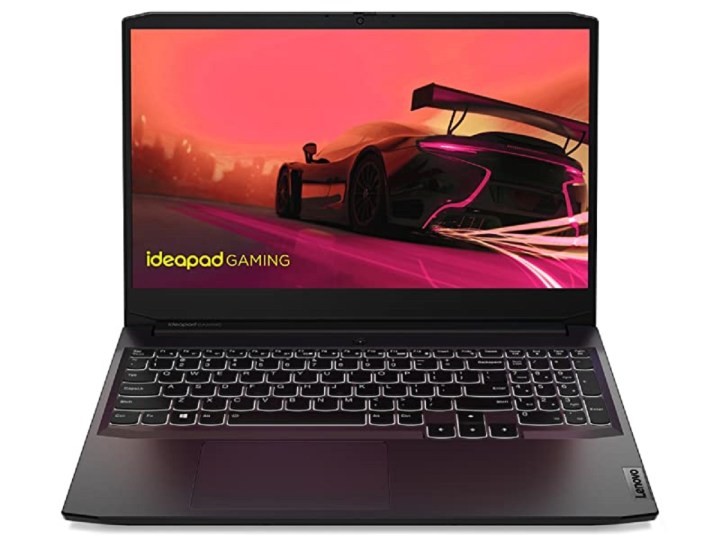
| Pros | Cons |
| Solid performance for the price | Only has an RTX 4050 |
| Good amount of RAM | Screen isn’t impressive |
| Portable |
While budget options aren’t ideal for heavy-duty 3D modelling, they’re a good option if you’re just starting out and don’t want to spend a ton of money. Funnily enough, this is the second gaming laptop on this list, but we can’t deny that the IdeaPad Gaming 3 is also great as a budget 3D modelling laptop. For example, it has the same RTX 4050 as the LG Gram 17 but costs only half the price, so it’s excellent value if you don’t care as much about having a thin and light laptop.
Another thing that’s more value-oriented is the 15.6-inch screen, which only has a 1920 x 1080 resolution and only hits 45% NTSC, which isn’t that impressive. Also, it can only hit 250nits of brightness, which is equally unimpressive and means that it won’t deal with bright direct lighting or even bright indirect lighting. On the other hand, it can run at a 120Hz refresh rate, so it’s still going to give you a smooth overall experience when viewing it, as will the 16GB of DDR5 RAM. Again, it is not the ideal of what we’d like to see, but it is more than enough to cover the recommended specs of most apps.
As for processing power, you get the mid-to-high-end AMD Ryzen 7 7735HS, which should handle most 3D modelling tasks without issue; plus, it’s generally a bit more power efficient and an excellent CPU for productivity. When it comes to battery life, you should expect around seven to ten hours, depending on what you’re using it for, with more general activity like watching a video taking up less battery.
| Specifications | |
|---|---|
| Screen Size |
15.6-inches |
| Processor | AMD Ryzen 7 7735HS |
| RAM | 16 GB |
| Storage | 512 GB |
| Weight |
4.96 pounds |
How We Chose These Laptops for 3D Modelling
Processing power
It’s probably not shocking to know that having a powerful CPU under the hood of any 3D modelling laptop is important since it’s one of the main number-crunchers of the CPU and goes a long way. That means that you should ideally aim for something like the Intel i7 or the Ryzen R7 as sort of the starting point, which is why most of our picks above are based around those processors.
In a similar vein, GPUs are also very important for 3D modeling, but this one is a bit more complicated due to the fact that there are consumer-grade GPUs and professional-grade GPUs. While professional-grade GPUs, like the Quadro family of cards, is excellent for 3D modeling, they are prohibitively expensive for most people, especially since high-end consumer GPUs have comparable specs. As such, we avoided any Quadro or professional-grade GPUs and instead focused on consumer GPUs that are cheaper and easier to find. Going with consumer GPUs also means that you have a lot more leeway in configurations and choices for laptops.
RAM
Memory is another important thing you’ll need to keep in mind, especially since a lot of more budget-friendly laptops tend to only go for 8GB. Unfortunately, the recommended specs for most CAD and 3D modelling software tend to sit at 16Gb, and even that is something we consider too low. Preferablly, we like to see something around 32GB or up, although anything above 32GB does tend to be quite expensive and will start giving you diminishing returns. So, if you’d like to go for a higher amount, just be sure that you actually are going to need it.
Screen
Ironically, the screen is the thing that will likely have the least impact on 3D modelling, mostly because it’s just a visual output more than anything else. So, while it would definitely nice to have a large 18-inch screen running 4K resolutions, 1080p is perfectly fine, as is a smaller screen. Also, smaller screens mean smaller laptops, so if you value portability, going with a smaller screen isn’t all that bad.
This article is managed and created separately from the Digital Trends Editorial team.
Editors’ Recommendations

